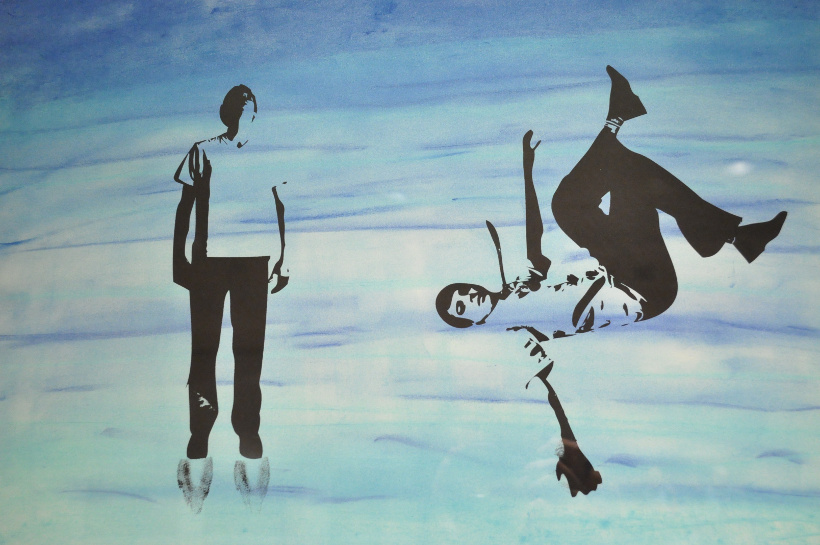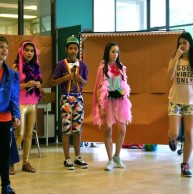Relationships
Mathematics - Grade 7
This unit of inquiry is not a recipe book but rather a launchpad to inspire new BIG IDEAS. We encourage you to use and/or modify one, or several of the BIG IDEAS below. Adapt it to the grade/ ability level of your students.
Enduring Understanding
Different measures and use of data help us compare, interpret and predict information.
Guiding Questions
Comparing people in our lives, do we know what influences our relationships?
Mind Opening
Choose or devise practices to encourage students to be open to new experiences and ways of thinking in your classroom. For example, the MindUP in-school program.
Discovery and Inspiration:
Launch the Project
• Introduce the Theme: Present the Enduring Understanding and Guiding Questions using vocabulary that is appropriate for your grade level.
• About Vancouver Biennale: Play a short video.
• Create Project Space: Brainstorm ideas to make the project theme visual and visible using bulletin boards, and/or a project corner to share relevant materials and inquiry questions and processes.
Reference Resources:
• Introduction to Sculpture and Public Art Unit Plan for information on how art has evolved over time and the unique experience sculptures and/or public art brings.
• Vancouver Biennale 2014-2016 Exhibition Theme: Open Borders / Crossroads Vancouver
• Vancouver Biennale Legacy: Engagement (Dennis Oppenheim, USA)
• About Artist and Artwork (PDF)
Other Resources
National Geographic Education: Language Diversity Index
Learning to Learn:
Art Inquiry
Make a visit to Engagement and encourage students to freely explore and interact with the art pieces individually and in groups. This Art Inquiry process enables the students to practice observing, describing, interpreting, and sharing visual information and personal experiences. Use the Art Inquiry Worksheet (PDF) to guide and capture their ideas and impressions. Customize or create your own Art Inquiry Worksheet as appropriate for your project and class needs.
Shared Insights
• Sharing Art Inquiry Experience: Ask students to share the Art Inquiry Worksheet responses in class.
• Artist Themes – Research: In small groups students rotate between information stations detailing the artist’s life and work. Station topics include: (1) education and training; (2) lifetime of artwork; (2) materials and processes; (3) beliefs and values. At each station, students answer questions and complete a task. For example, at the station “life’s work” students might plot the artist’s various installations on a map of the world.
• Artist Themes – Relationships: Referring to the location of Engagement, ask students if they are aware of any unique characteristics of relationship in the west end community based on what they know about the demographic. Lead a discussion how Engagement conveys relationship comparing to use of quantitative measures.
Inquiry Challenges
What is the demographic/attributes of each person we have a relationship with (ethnicity/first language, age, gender, colour of hair, etc.)? Choose your classroom, hockey team, swim club, etc. as a data sample.
With collected data, build graphs and perform and present analysis. You may use ratios, fractions and percent to express the probability of a certain demographic being present in another related group. You may also use the collected data to predict the demographics in other relationship groups, or create tree graphs for comparative analysis.
Student Creation and Taking Action
Students and teachers decide on medium and methods to communicate their BIG IDEAS learning to target audience. Use posters, websites, montages, written essays/poems, film and audio, dance, visual arts or theatre.
Students can decide individual or group projects to promote their learning to the broader community for long-term influence. The focus being students as learners and communicators, to engage with an audience to get feedback, and ideally, the action is propelled even further. For example, students can create a welcome board in different languages for their school.
Reflection
• Teacher and students can reflect on their entire learning process by revisiting the Enduring Understanding and relevant Guiding Questions.
• How did the unit of study open inquiry, create cross–curricular learning opportunities and/or apply learning to real life situations? Has this unit of inquiry changed your opinions, values and world view? In what ways, if any, has it helped you grow as a learner?
Ideas for Cross-Curricular Access
• Arts Education (Visual Arts): Create photo collages of the students and their relationships. Represent these relationships in images other than faces.
• Language Arts: Learn three commonly used words, e.g. ‘Welcome,’ and use them in a writing assignment. Or, create a ‘WELCOME’ poster for the front entrance of the school using greetings from as many languages as you can.
• Social Studies: Investigate countries and cities of origin, languages of communication, religious backgrounds, etc. of relationship group. Plot ‘roots and routes’ (where do they come from and how did they get here) on a world map.
Credits
Written: Terry Howe, Curriculum Consultant and Retired School Principal
Contributor: Katherine Tong, Vancouver Biennale Education Program Director
©2013 Vancouver Biennale


